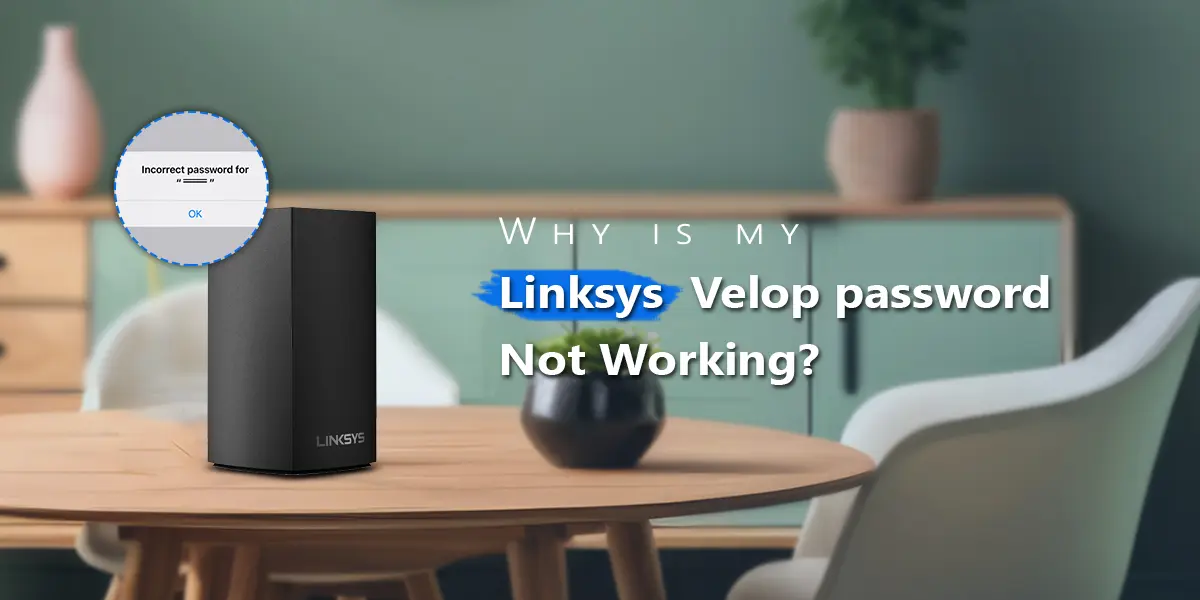
In today’s world, having a solid Wi-Fi connection is essential, and Linksys Velop is well-known for providing smooth, high-speed wireless internet coverage. However, problems such as a password not functioning might be aggravating. In this comprehensive article, we’ll look at the many reasons why your Linksys Velop password not working and provide troubleshooting techniques to repair the problem.
Understanding Linksys Velop Passwords:
Before troubleshooting, it’s important to understand the passwords connected with your system.
- Admin Password: This password is used to access the router’s settings and change parameters such the network name, password, and security settings.
- Wi-Fi Password: A Wi-Fi password is necessary to connect devices to your wireless network. It averts unsanctioned entities from retrieving your system.
Why Linksys Velop Password Not Working?
If your Linksys Velop password is not working, it can be frustrating. Here are some common reasons why this might happen and steps you can take to resolve the issue:
Incorrect Password Entry:
- Mistyping is the leading cause of password failure.
- Pass in the details accurately.
Changed Password Without Updating Devices:
- If you changed your Wi-Fi password through the Linksys app or web interface, be sure to update all connected devices with the new password.
- Devices attempting to connect with the old password will inevitably fail.
Router Reset:
- Resetting the router may result in the password inveterate to its inventive state.
- If you or someone else reset the router, attempt to log in with Linksys’ default password.
- Usually, the user handbook or the router itself contain this information.
Network Configuration Problems:
- Occasionally, problems with the network configuration can impede the proper authentication of credentials.
- Verify that the firmware on your router is current and that there are no incompatible settings resulting in authentication errors.
Interference or Weak Wi-Fi Signal:
- These factors can interfere with the authentication process and give the impression that the password isn’t functioning.
- They can also be caused by intrusion from adjacent grids
- Aim to minimize sources of interference or relocate nearer to the router.
Security Protocol Mismatch:
- Verify that the security protocol (WPA, WPA2, or WPA3) that your device supports and the security protocol that your router has picked match.
- Authentication problems can result from mismatched security mechanisms.
Hardware Problems With The Router Itself:
- Authentication issues can occasionally be caused by hardware faults with the router itself.
- Try contacting customer support or doing a router factory reset if not a single of the aforesaid shots exert.
Steps For Troubleshooting For Linksys Velop Password Not Working:
Double-Check Your Password Entry:
- Make sure you’re typing the right password, paying attention to the capital and lowercase characters.
Update Connected Devices:
- Verify that all connected devices have the updated password if you have changed it recently.
Reset Router:
⦁ Attempt to reset the router to its preliminary arrangement and twitch over.
Look For Updates To The Firmware:
- To prevent any known authentication problems, make sure the firmware on your router is up to current.
Optimize WiFi Signal:
⦁ Boost the Wi-Fi signal by keeping your router in the middle, away from obstacles, and with as little interference from other devices as possible.
Check For Security Procedures:
⦁ Make sure that the security protocol settings on your devices and router are the same.
Final Thoughts
It can be annoying to have problems with your Linksys Velop password, but you can fix them and resume having wireless access without interruption by following the correct troubleshooting procedures. You can handle any password-related problems more effectively if you know the various password types connected to your network and follow the offered Linksys Velop troubleshooting guide. When troubleshooting web problems, retain in concentration that meticulousness and patience are essential.